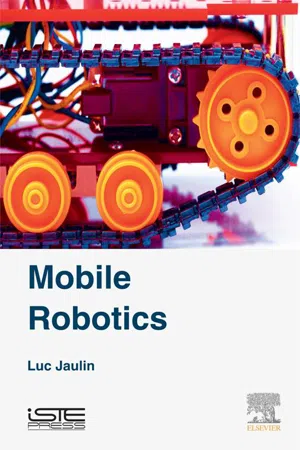
- 314 pages
- English
- ePUB (mobile friendly)
- Available on iOS & Android
Mobile Robotics
About this book
Mobile Robotics presents the different tools and methods that enable the design of mobile robots; a discipline booming with the emergence of flying drones, underwater robots mine detectors, sailboats robots and robot vacuum cleaners.Illustrated with simulations, exercises and examples, this book describes the fundamentals of modeling robots, developing the actuator concepts, sensor, control and guidance. Three-dimensional simulation tools are also explored, as well as the theoretical basis for reliable localization of robots within their environment.- Illustrates simulation, corrected exercises and examples- Explores different tools and methods to enable you to design mobile robots- Features three-dimensional simulation tools as well as the theoretical explanation
Frequently asked questions
- Essential is ideal for learners and professionals who enjoy exploring a wide range of subjects. Access the Essential Library with 800,000+ trusted titles and best-sellers across business, personal growth, and the humanities. Includes unlimited reading time and Standard Read Aloud voice.
- Complete: Perfect for advanced learners and researchers needing full, unrestricted access. Unlock 1.4M+ books across hundreds of subjects, including academic and specialized titles. The Complete Plan also includes advanced features like Premium Read Aloud and Research Assistant.
Please note we cannot support devices running on iOS 13 and Android 7 or earlier. Learn more about using the app.
Information
Three-dimensional Modeling
Abstract

Table of contents
- Cover image
- Title page
- Table of Contents
- Copyright
- Introduction
- 1: Three-dimensional Modeling
- 2: Feedback Linearization
- 3: Model-free Control
- 4: Guidance
- 5: Instantaneous Localization
- 6: Identification
- 7: Kalman Filter
- Bibliography
- Index